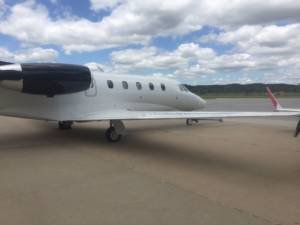Jet cards, a debit card that enables you to prepay to fly privately, have become the hot spot of private aviation with the number of programs doubling during the past decade. At the same time, delivery of new private jets, sales of used jets and fractional ownership has been stagnant during the same period. Today, there are over 35 jet card providers as opposed to a handful of companies selling fractional shares. Between these jet card sellers, there are more than 250 different programs, so how do you find the right program for your needs?
Interested in some of the best ways for our readers to navigate the options when it comes to these jet cards, we reached out to discuss this with Doug Gollan, the founder and editor-in-chief of Private Jet Card Comparisons — an online buyer’s guide to jet card memberships. Before launching his website one year ago, he found that buyers typically asked a friend or had their assistant do some internet research. The problem, he claims, are that friends often have very different flying needs, so the program that is right for your buddy won’t work for you, while chances are your assistant isn’t an expert in the complex world of private jet card memberships.
He believes the annual subscription of $250, which comes with e-mail updates on program changes and special offers, plus the opportunity to ask him questions, makes sense if you are going to spend $50,000 to $500,000 on a jet card program. The alternative he says would be to hire a consultant, which would run about $5,000.
“Our spreadsheets compare over 250 programs by more than 65 variables from 35 companies. As you can probably imagine, for one person it would be impossible to duplicate the amount of work we have put into our buyer’s guide,” says Gollan.
What are some of the variables you will find if you subscribe?
In addition to basic hourly rates, the guide compares a myriad of extra charges some companies charge while others don’t. This ranges from de-icing, which can be as much as $10,000 per incident, to peak day surcharges, extra charges for fuel, WiFi and catering. Other differences include policies on bringing your pets as well as sending unaccompanied minors. Some programs offer discounts for roundtrips, while others allow use of multiple aircraft at the same time, something important for both families and businesses. Some programs also allow you to switch the size of your plane for each trip.
Gollan says Private Jet Card Comparisons also compares safety ratings for each provider, including details on internal safety programs and pilot qualifications. There is also information about company size and ownership for each provider. Learn More: http://luxegetaways.info/private-jet-card-comparison
“I really think Private Jet Card Comparisons is a very affordable way to make sure you know before you buy,” adds Golan.



